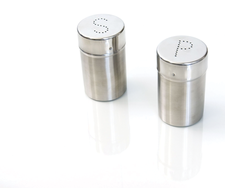Hashes, salt, and pepper
Salt and Pepper

© Lead Image © topnat, 123RF.com
Cryptographic hash functions help you protect your passwords, but hashing is only secure if properly understood.
Hash functions are an integral part of computer science – and not just with databases and checksums. Hashes were originally intended for storing data efficiently in memory, but the hashing concept has evolved into a technique for securely storing passwords.
Linux writes the password hash values to the /etc/shadow file, which you can only read if you have root privileges. But even if you have the root password, you'll find it difficult to learn any useful access information. The function used to store the password hash values in etc/shadow is a one-way function, which means you can't work backward from the hash value to create the original password – at least in theory. As you'll learn in this article, attackers still sometimes manage to crack these supposedly irreversible hash functions.
What is a Hash?
The idea of a hash is simple: An address is calculated from the value that is to be stored. Suppose, for example, you need to store the four user names Fritz, Laempel, Max, and Moritz. A hash function would calculate a numeric value from these names.
[...]
Buy this article as PDF
(incl. VAT)
Buy Linux Magazine
Subscribe to our Linux Newsletters
Find Linux and Open Source Jobs
Subscribe to our ADMIN Newsletters
Support Our Work
Linux Magazine content is made possible with support from readers like you. Please consider contributing when you’ve found an article to be beneficial.

News
-
Fedora 43 Has Finally Landed
The Fedora Linux developers have announced their latest release, Fedora 43.
-
KDE Unleashes Plasma 6.5
The Plasma 6.5 desktop environment is now available with new features, improvements, and the usual bug fixes.
-
Xubuntu Site Possibly Hacked
It appears that the Xubuntu site was hacked and briefly served up a malicious ZIP file from its download page.
-
LMDE 7 Now Available
Linux Mint Debian Edition, version 7, has been officially released and is based on upstream Debian.
-
Linux Kernel 6.16 Reaches EOL
Linux kernel 6.16 has reached its end of life, which means you'll need to upgrade to the next stable release, Linux kernel 6.17.
-
Amazon Ditches Android for a Linux-Based OS
Amazon has migrated from Android to the Linux-based Vega OS for its Fire TV.
-
Cairo Dock 3.6 Now Available for More Compositors
If you're a fan of third-party desktop docks, then the latest release of Cairo Dock with Wayland support is for you.
-
System76 Unleashes Pop!_OS 24.04 Beta
System76's first beta of Pop!_OS 24.04 is an impressive feat.
-
Linux Kernel 6.17 is Available
Linus Torvalds has announced that the latest kernel has been released with plenty of core improvements and even more hardware support.
-
Kali Linux 2025.3 Released with New Hacking Tools
If you're a Kali Linux fan, you'll be glad to know that the third release of this famous pen-testing distribution is now available with updates for key components.

